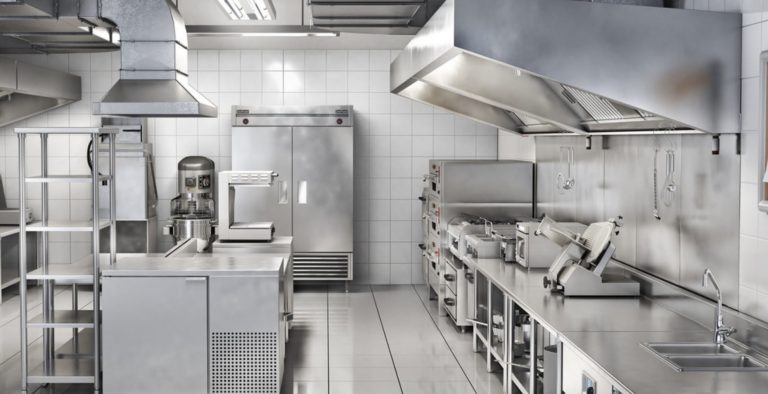Disparate from the traditional commercial face-to-face restaurants with high-rent locations and high foot traffic, ghost kitchens have become the talk of the internet ever since the pandemic started.
They are known by many peculiar names; ghost kitchens, dark kitchens, cloud kitchens, virtual kitchens, and even headless restaurants, as some people call them.
These “kitchens”, having no seats, waiters, storefront, or most other elements of a typical restaurant, have significantly altered the brick-and-mortar restaurant concept and have opened up new doors for the fast-food industry.
But you might be wondering, what is a ghost kitchen? Why have they gained so much traction? And are they really worth it?
Fortunately, we’re here to answer all of that and much more.
Story Stages
Ghost Kitchens
Ghost kitchens refer to virtual kitchens, or in other words, restaurants that are designed to solely concentrate on takeout or delivery services and don’t offer dine-in operations. Their menu items are optimized for deliveries and are only available to customers that order them online or through an app.
Numerous large fast-food chains have embraced the concept of ghost kitchens, especially as a result of the pandemic, with customers ordering food online more than ever before.
Ghost kitchens have made it possible for anyone to open a restaurant without going into crippling debt because of the exorbitant costs of dine-in restaurants. They require comparatively less management, making operations much more straightforward.
Benefits of Ghost Kitchen Services
It might be baffling to some people why ghost kitchens have gained such a tremendous following with countless new in-home delivery businesses opening up every week and just as many people using their services.
But it’s not difficult to see why when you think about it. For instance, the most significant advantage of a ghost kitchen is that you won’t have to spend thousands of dollars on rent and equipment when starting up a new business. Some other huge benefits are:
Fewer Startup Expenses
As we just discussed, starting a new business venture, such as opening up a restaurant, is enough to empty your wallet. Generally speaking, the costs of rent, kitchen equipment, employment payroll, decorations, and furnishing, when added up, are incredibly high.
But costs and expenses aren’t the only factors to consider when opening a physical restaurant; things like business location and building maintenance are just as important. However, they all become pointless if you start a ghost restaurant.
Profiting from Online Delivery Demand
Ever since lockdowns have become a thing, people have realized the convenience of online delivery services, where all the work is done for you while you relax at home and wait for your order.
Ghost kitchens also can add their business to the list of restaurants to favored food delivery apps like GrubHub and DoorDash, which can quickly boost a business’s awareness.
Increased Brand Recognition
In the massive hoard of infinite fast food and in-home delivery restaurants, it’s crucial to set yourself apart and leave an impression on your business’s consumers.
Taking your services online will allow you to spread the message from your social media accounts and take advantage of the digital world. You need to develop online marketing strategies to successfully reach a wider audience.
Direct User-Driven Insight
Ghost restaurants have the ability to easily keep track of data like which food items are the most popular among their customers. With access to such data, they can modify and supply items or services according to the consumers’ demands, preferences, and opinions.
Different Types of Ghost Kitchens
There’s obviously going to be more than one type since different businesses choose to operate in different styles. Each kind has its own advantages and specializes in various fields. Some common types are:
Incubator Ghost Restaurants
If you already own a physical restaurant, then an incubator or pop-up kitchen would be the ideal choice. An Incubator kitchen is a commercial kitchen space attached to a traditional dine-in kitchen while still operating separately.
With this kitchen model, you can integrate delivery services to your already-functioning kitchen but divide both processes so that either sector isn’t overwhelmed. This is an excellent option for existing businesses to test the waters on the ghost kitchen concept while steadily increasing revenue.
Commissionary Ghost Kitchens
Commissary or shared ghost restaurants are commercial kitchen spaces solely for delivery services, entirely separated from normal operations, and are typically rented between many restaurants.
These are also called entrepreneur kitchens because, in most cases, an entrepreneur rents an area and sets up various sectors fitted with kitchen equipment to virtual restaurants. This model is quite favorable as the rent costs are significantly lower, and the utilities are already provided.
Kitchen Pods
Kitchen pods, also known as dark kitchens, are installed in shipping containers or small spaces outfitted with kitchen accessories. If you’re looking to open up a ghost kitchen as soon as possible and on a low budget, then kitchen pods are the perfect option.
